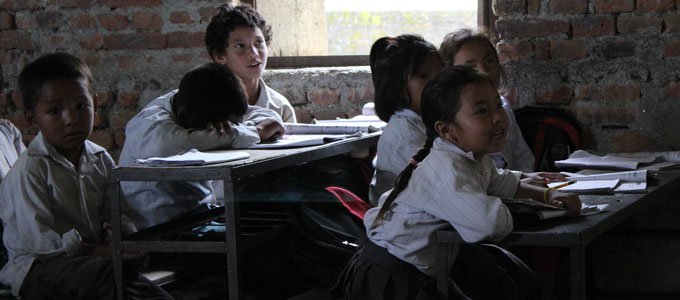What has VIN achieved in women’s empowerment programs by now?
What is the Women Empowerment Program?
The Women Empowerment Program addresses global gender issues, which vary significantly from one country to another. In Nepal, women face starkly different roles and opportunities compared to those in more economically developed regions like Europe and North America. For instance, the majority of Nepalese women are illiterate, have a lower life expectancy than men, and often depend on men for their basic needs such as housing, food, and economic stability.
What is the Situation for Women in Nepal?
- Childbirth Mortality: 239 out of every 10,000 women die due to childbirth.
- Employment Rate: Only 80% of Nepalese women are employed, much lower than men.
- Rural Vulnerability: Women in rural areas face greater challenges due to limited economic, health, education, and empowerment opportunities.
- Agricultural Employment: Nearly 85% of employed Nepalese women work in agriculture.
- Early Marriage: Almost half of Nepalese women marry before the age of 18.
- Health and Nutrition: General health and nutrition standards for Nepalese women are poor, especially in rural areas.
Major Issues in Women’s Health in Nepal
- Life Expectancy and Maternal Mortality: Women have shorter life expectancy and a high maternal mortality rate.
- Child Mortality and Neglect: Higher rates of infant and child mortality, with girls’ health often neglected.
- Mental Health: Mental health issues are taboo.
- Healthcare and Contraception: Inadequate healthcare services and access to contraception.
- Cultural Prejudices: Societal expectations and prejudices regarding women’s bodies, virginity, sexual activity, and menstruation.
Why Choose the Women’s Empowerment Program?
Empowering women is crucial for enhancing the prosperity and living standards of local communities and Nepal as a whole. The Women’s Empowerment Program complements the efforts of the Nepalese government and NGOs, addressing community needs and problems.
What is the Goal of the Women’s Empowerment Program?
The primary goal is to empower women socially and economically through education, life skills, and income-generation initiatives. VIN provides education and training to women of various age groups, teaching English and life skills to support those most in need.
How Does VIN Achieve the Goal of Women’s Empowerment?
VIN runs several successful projects aimed at empowering women, including:
What are the Rights of Women Empowerment?
Women’s empowerment entails the following rights:
- Equal access to education and employment opportunities.
- Reproductive rights and access to healthcare.
- Political participation and representation.
- Freedom from violence and protection against abuse.
- Property rights and access to resources.
Education, Rights, and Life Skills
Thousands of women have participated in classes covering life skills (self-awareness, coping with stress and emotions) and professional skills (mathematics, computer literacy). Health-related training includes fertility and sexual health, breast cancer awareness, and basic sanitation. Business and Community Learning Centers offer practical skill development.
Microcredit/Microfinance Through Cooperatives
Microcredit programs empower women to manage their finances, enhancing family recognition and social status. In Jitpurphedi and Okhaldhnga, hundreds of women receive loans, and numerous social events raise awareness about financial independence. Our business center provides training in microcredit and finance.
Entrepreneurship, Income Generation, and Vocational Training
Informal employment hinders productivity, particularly for female farmers. VIN introduces innovative agricultural methods to improve livelihoods. Training in income-generating skills like vegetable farming, cheese making, and mushroom farming has benefited hundreds of women. Our comprehensive Women’s Empowerment Program effectively addresses the needs of underprivileged women.
What are the 5 Pillars of Women Empowerment?
- Education: Ensuring equal access to education for women.
- Economic Independence: Providing opportunities for women’s economic participation and financial self-sufficiency.
- Healthcare: Ensuring access to quality healthcare, including reproductive health services.
- Political Participation: Encouraging women’s involvement and representation in political processes.
- Legal Equality: Establishing and enforcing laws that guarantee equal rights and protection for women.






